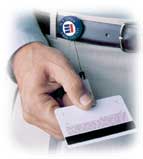A few years back, a video of a lecture by Carnegie Mellon professor Randy Pausch made the YouTube rounds, becoming enormously popular; you’ve probably seen it. He later wrote a book discussing and unpacking many of the points he brought up in the lecture. If you haven’t watched or read them, I highly recommend both.
In any case, in the book Pausch describes the birth of his first child, how a complicated birth (a placental abruption) forced him to rush his wife to the Magee-Womens Hospital at the University of Pittsburgh Medical Center, and how his newborn child was brought into their neonatal ICU. He writes,
At Magee, they did a wonderful job of simultaneously communicating two dissonant things. In so many words, they told parents that 1) Your child is special and we understand that his medical needs are unique, and 2) Don’t worry, we’ve had a million babies like yours come through here. (91–92)
This is an elegant account of the demeanor we should all be trying to strike with the families of patients, and indeed with our patients themselves.
Many beginning providers, understandably unsure, will approach each patient like an antique porcelain vase: precious, delicate, and prone to breakage. This is the right attitude as far as priorities — we should take our care seriously — but that doubt is communicated in our body language and tone, and it’s not what sick and scared people want to hear. Imagine being the patient whose doctor says, “Man, look at that! I’ve never seen anything like that! Can we publish you?” or “Okay, I’m not going to lie, I’ve never done this in my life. But I did stay at a Holiday Inn Express last night…”
On the other hand, it can be very few moons indeed until you’re a “veteran” in the worst sense of the word, dragging your technically skilled but burned-out husk from patient to patient, seeing nothing but a stack of paperwork and a routine litany of tests and treatments. Her? Oh, just another abominal pain. Yawn. Her name? Search me. Is it lunchtime yet?
See, people want to be treated like people, and people are unique, precious (at least in their own eyes), scared, and need to be engaged with on the same human level as when you say “thank you” to your barista or read a bedtime story to your son. But people are also machines, and the trick to fixing broken machines is to fix a lot of them, and treat them all the same. We need to be able to reconcile these paired, antagonistic traits, because otherwise we can’t do what they called us to do. It’s not a matter of nailing one goal but missing the other: you miss both. You can’t reassure anyone if you don’t competently address their actual problem, and you can’t practice sound medicine if you don’t engage with patients as people.
That’s the trick that the obstetrics and neonatal teams at Magee pulled off, and it’s all the more important for us, who have to approach patients without the comforting backdrop (that is, comforting to them and to us) of a bright beeping hospital. It’s the trick of quiet confidence, of demonstrating without words that you know exactly what you’re doing, that you bring tremendous skill and experience to the table — but that those tools are being brought to bear for your patient, for the scared individual you’re kneeling beside. The “all the kings horses” response by fire and EMS, the loud and alarming transport to the hospital, the wires and tubes and countless gloved hands — it’s overwhelming and frightening if you’re thrown into it as an unknown environment, but if you understand that it’s all being done for you, then it’s comforting. It’s like calling for help and getting the Wolf. That’s exactly what you wanted in your time of need.
You may not want to date a cocky lawyer. But he’s the one you’d want at trial.



Recent Comments